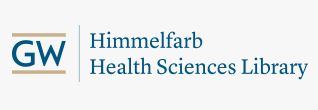Optimizing Management of Febrile Young Infants Without Serum Procalcitonin
Document Type
Journal Article
Publication Date
2-1-2025
Journal
Pediatrics
Volume
155
Issue
2
DOI
10.1542/peds.2024-068200
Abstract
BACKGROUND: Febrile young infants are at risk of invasive bacterial infections (IBIs; bacteremia or bacterial meningitis). American Academy of Pediatrics (AAP) guidelines recommend that when procalcitonin testing is unavailable, C-reactive protein (CRP), absolute neutrophil count (ANC) and temperature should be used to identify low-risk infants. We sought to determine the optimal combination of these inflammatory markers to predict IBI when procalcitonin is unavailable. METHODS: This was a secondary analysis of prospectively collected data for all febrile infants aged 60 days or younger evaluated at a tertiary pediatric emergency department (January 2018 to July 2023). Previously healthy term infants aged 8 to 60 days with rectal temperatures of 38.0°C or greater meeting AAP inclusion/exclusion criteria were analyzed. A decision rule was derived by classification and regression tree analysis with 10-fold cross-validation then compared to AAP-recommended thresholds of ANC ≤ 5200/mm3, CRP ≤ 20 mg/L, and temperature ≤ 38.5°C. RESULTS: Among 1987 infants, 38 (1.9%) had IBIs. The AAP-recommended thresholds missed no IBIs (sensitivity: 100.0% [95% CI, 88.6%-100.0%]; negative predictive value (NPV): 100.0% [95% CI, 99.5%-100.0%]; specificity: 50.7% [95% CI, 48.5%-53.0%]). Optimal derived thresholds were CRP ≤ 22.2mg/L, temperature ≤ 39.0°C, and ANC ≤ 4500/mm3; urinalysis and age were not selected. The derived rule also missed no IBIs (sensitivity: 100.0% [95% CI, 88.6%-100.0%]; NPV: 100.0% [95% CI, 99.7%-100.0%]); however, specificity improved to 83.8% (95% CI, 82.1%-85.4%). Area under the receiver operating curve for the cross-validated rule (91.9% [95% CI, 91.1%-92.7%]) was higher than at AAP-recommended thresholds (75.4% (95% CI, 74.3%-76.5%]). CONCLUSIONS: The combination of ANC, CRP, and temperature at statistically derived thresholds improved diagnostic accuracy for identifying infants at low risk of IBIs compared to AAP-recommended thresholds.
APA Citation
Burstein, Brett; Wolek, Caroline; Poirier, Cassandra; Yannopoulos, Alexandra; Charles Casper, T; Kaouache, Mohammed; and Kuppermann, Nathan, "Optimizing Management of Febrile Young Infants Without Serum Procalcitonin" (2025). GW Authored Works. Paper 6680.
https://hsrc.himmelfarb.gwu.edu/gwhpubs/6680
Department
Pediatrics

- Citations
- Citation Indexes: 4
- Usage
- Abstract Views: 1
- Captures
- Readers: 8
- Mentions
- News Mentions: 1

